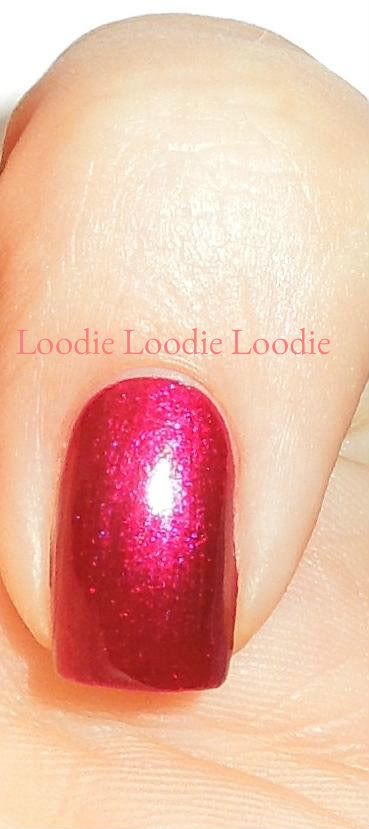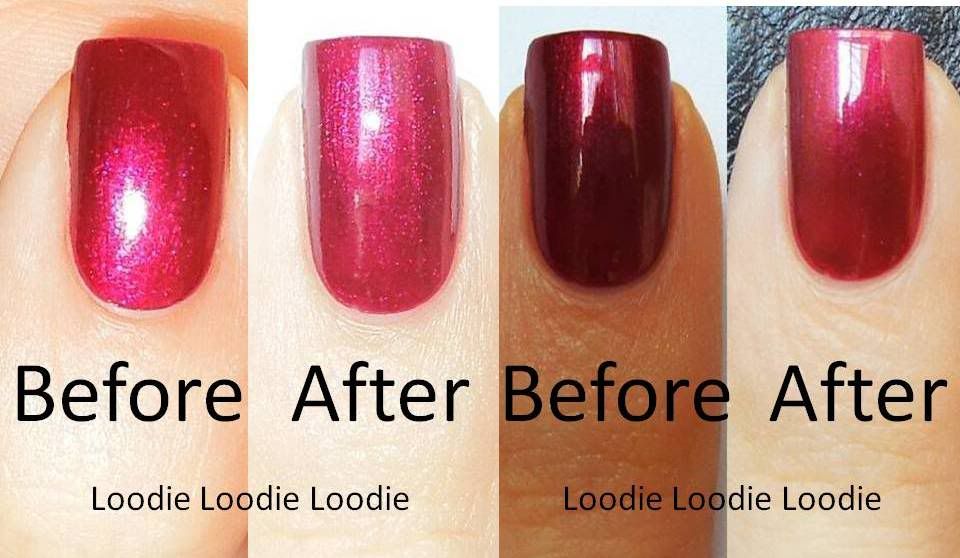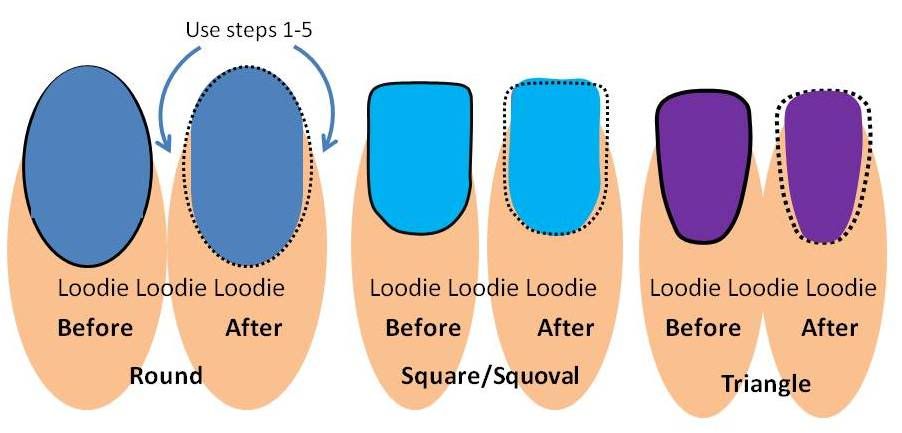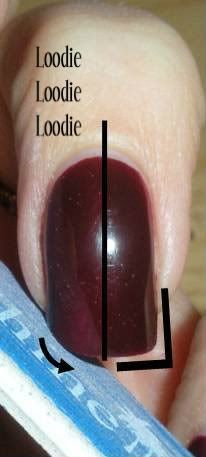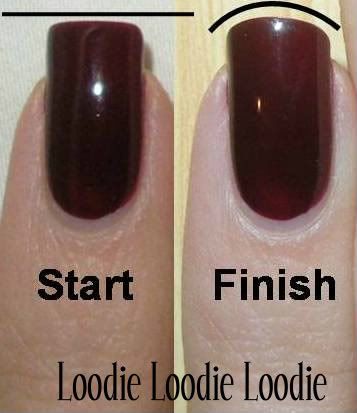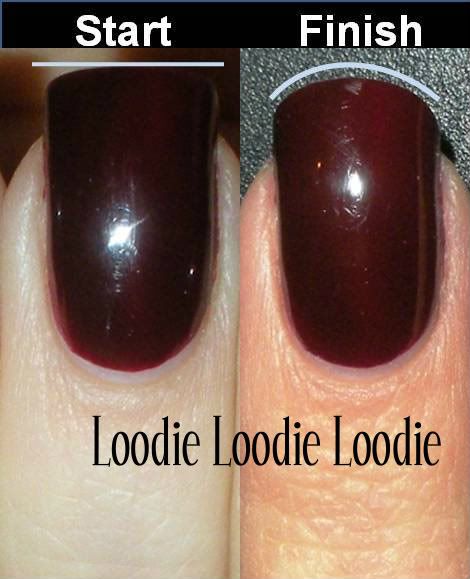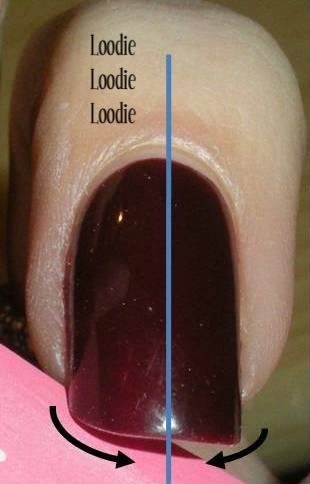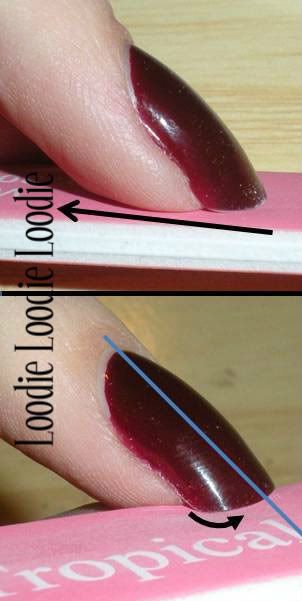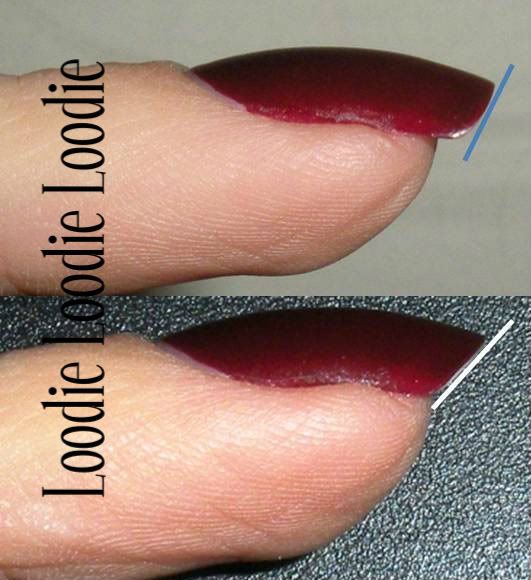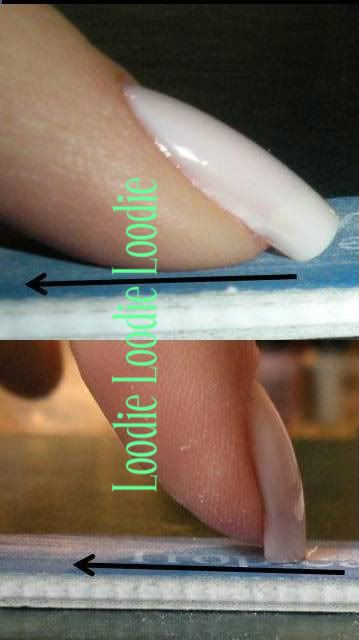In a few previous posts, I have shown you just how chubby your nails can get when they consume copious amounts of water. Look here, here and here. But what if after shrinkage (i.e. tightening of your C-curve) they still seem to bulge and look obese? Or what if your triangle shaped nail is making you feel down and out?
No fear! Here is a techniques you can use when painting your nails to make them appear thinner.
First a little rollie pollie finger okay?
Click on any of these pictures to make them larger.
One coat of China Glaze - Vertical Rush
This nail is fully dried thus the C-curve has done all it can do to make the nail appear thinner. The bulge is permanent. Note that, it may look like I have polish on my skin at the sides of the nail bed, but I assure you I don't (pictures below).
What to do?
If you are proficient at painting your nails, you can skip further down, otherwise....
Grab a fine cosmetic brush and acetone.
Here are a few examples:
The brushes with the black ferrules and white handles are no name brands, while the black handled silver ferrule brush is a Swissco brand, and the white handle silver ferrule brush is by ELF.
Also grab a small piece of paper towel to wipe off excess acetone and polish.
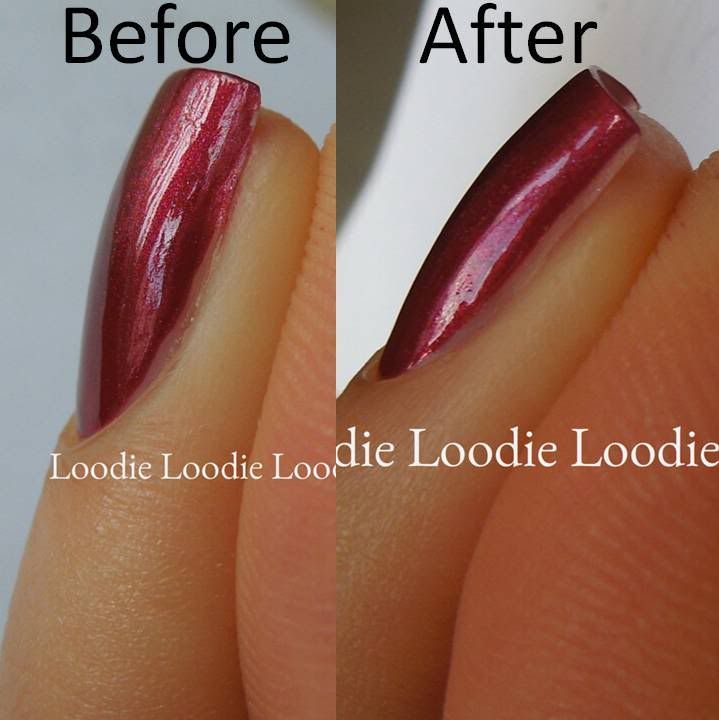
Here is a shot of one of the sides.
1. Dip your brush in acetone.
2. Get rid of excess acetone from the brush by lightly touching the brush against the paper towel
3. Run the brush along the nail side walls making a clean line.
4. Wipe off the polish on the paper towel.
5. Repeat steps 1. - 4. until you are happy with the lines.
You can take off more or less. It seems on this side I took off a bit less polish.
If you are a proficient nail painter, just avoid painting the entire nail; leave a clean line at the side walls.
Here are a few before and after shots, head on. Depending on your own nail shape you may see only a subtle difference. The flatter your nail (less pronounced C-curve) the greater the affect you will see.
Here is a schematic for different nail shapes:
Each nail bed shape can appear thinner. Since no filing of the side wall is necessary, you can maintain the integrity and strength of the nail bed.
Although this is a very effective technique, I am sometimes bothered that a portion of my nail bed is not covered with polish. It will look good far away or head on, yet when I bring them close to my face and see them from the side, I have a raging desire to fill in the gap. I struggle with them looking fat vs. thin.
Do you ever use this technique when painting your nails?
